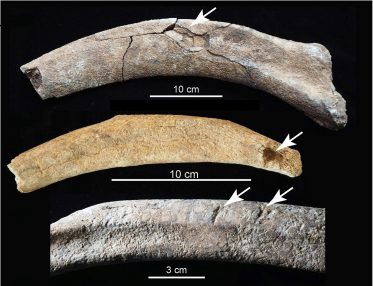Mammoth Bones Rewrite Human History
December 5, 2022

In 2016, Jackson School Professor Timothy Rowe began investigating mammoth bones that were discovered on his New Mexico property. Six years later, he and research collaborators published a study making the case that the bones are the remains of a prehistoric butchering site — and offer some of the most conclusive evidence for humans settling in North American thousands of years before conventionally thought.

“What we’ve got is amazing,” said Rowe. “It’s not a charismatic site with a beautiful skeleton laid out on its side. It’s all busted up. But that’s what the story is.” Their findings were published in Frontiers in Ecology and Evolution in July 2022.
Jackson School co-authors include Professor Richard Ketcham and research scientists Romy Hanna and Matthew Colbert.
The mammoth site offers a wealth of evidence rarely found in one place. It includes fossils with blunt force fractures, bone flake knives with worn edges, and signs of controlled fire. And thanks to carbon dating analysis on collagen extracted from the mammoth bones, the site also comes with a settled age of 36,250–38,900 years old, making it among the oldest known anthropological sites in North America.
The Clovis culture — which dates to 16,000 years ago — left behind obvious stone-wrought tools. But at older sites that lack tools, evidence for human settlement gets more subjective.
In their study, Rowe and his co-authors compile an array of evidence to support their butchering hypothesis.
Bone samples scanned at the Jackson School’s University of Texas Computed Tomography Facility were found to have butchering marks. This includes bone flakes with microscopic fracture networks akin to those in freshly knapped cow bones, and well-placed puncture wounds that would have helped drain grease from ribs and vertebral bones.
And chemical analysis of the weathered rock surrounding the bones showed that fire particles came from a sustained and controlled burn, not a lightning strike or wildfire. The material also contained pulverized bone and the burned remains of small animals.
Back to the Newsletter